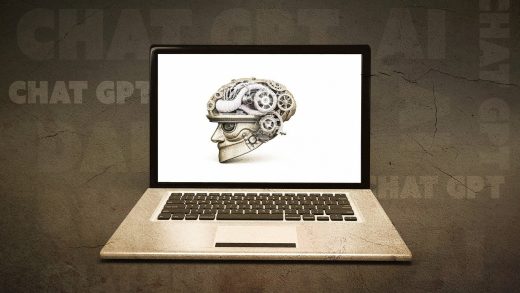In recent years, the world has witnessed the devastating impact of pandemics, which have highlighted the urgent need for innovative solutions. Artificial intelligence (AI) has emerged as a powerful ally in the fight against infectious diseases. By harnessing the capabilities of AI, we can significantly enhance our ability to prevent pandemics before they escalate into global crises. Imagine having a crystal ball that not only predicts the future but also provides actionable insights to safeguard public health. This is the promise that AI holds for us.
AI’s potential in pandemic prevention lies in its ability to analyse vast datasets, identify patterns, and make predictions with remarkable accuracy. For instance, by leveraging machine learning algorithms, health authorities can forecast potential outbreaks based on historical data, environmental factors, and even social media trends. This proactive approach enables timely interventions, potentially saving countless lives.
Moreover, AI can streamline data collection and enhance surveillance systems, allowing for real-time monitoring of infectious diseases. These systems can provide critical insights that facilitate early detection and rapid response to potential threats. Imagine a scenario where health officials receive alerts about an unusual spike in flu-like symptoms in a specific region—this could trigger immediate investigations and containment measures.
However, while the advantages of AI are immense, we must also navigate the challenges it presents. Issues such as data privacy, algorithmic bias, and ethical considerations in AI decision-making must be addressed to ensure equitable health outcomes. As we look towards the future, collaboration among global health organisations and continuous advancements in AI technology will be crucial in enhancing our resilience against future pandemics.
In conclusion, the integration of AI into public health strategies offers a beacon of hope in our quest to prevent pandemics. By embracing these technologies, we can create a safer world for everyone. For further insights, consider exploring resources such as WHO’s pandemic preparedness guidelines.
Understanding AI’s Role in Public Health
Artificial Intelligence (AI) is revolutionising the field of public health in ways that were once considered the realm of science fiction. By leveraging its ability to process and analyse vast amounts of data, AI enhances our understanding of disease patterns and trends, ultimately helping to prevent pandemics before they escalate. Imagine having a super-intelligent assistant that can sift through terabytes of health data in seconds, identifying potential outbreaks before they even make headlines. This is precisely what AI offers.
One of the most compelling aspects of AI’s role in public health is its predictive capabilities. Through advanced algorithms, AI can forecast potential health crises by analysing historical data and identifying patterns that humans might overlook. For instance, AI systems can monitor social media for mentions of flu-like symptoms, allowing health authorities to act swiftly when an outbreak is detected.
Moreover, AI plays a crucial role in enhancing surveillance systems. These systems, powered by AI, provide real-time monitoring of infectious diseases, enabling public health officials to respond proactively. The integration of AI in data collection not only improves accuracy but also reduces the time taken to gather crucial information. This leads to timely interventions, which are essential in curtailing the spread of diseases.
However, it is essential to address the ethical considerations that accompany the use of AI in public health. Concerns about data privacy and algorithmic bias must be taken seriously to ensure that AI applications do not inadvertently harm vulnerable populations. As we embrace this technology, we must also commit to using it responsibly.
In summary, AI is not just a tool; it is a game-changer in public health. By enhancing data analysis, predictive modelling, and surveillance, AI empowers us to tackle potential pandemics head-on. As we continue to explore its capabilities, the future looks promising for global health security.
| AI Applications | Description |
|---|---|
| Predictive Modelling | Forecasting potential outbreaks using historical data. |
| Data Surveillance | Real-time monitoring of infectious diseases. |
| Vaccine Development | Accelerating the process through data analysis. |
For more information on how AI is shaping public health, visit World Health Organization.

Predictive Modelling and Outbreak Forecasting
Predictive modelling is like having a crystal ball for public health. By utilising AI algorithms, we can forecast potential outbreaks before they even start to rear their ugly heads. Imagine being able to predict a storm before it hits, giving you time to prepare and protect yourself. This is exactly what predictive modelling does for health authorities, enabling them to implement preventative measures that can save countless lives and resources.
AI-driven predictive models analyse vast datasets, including historical outbreak data, environmental factors, and even social media trends. This data integration allows for the identification of patterns that might otherwise go unnoticed. For instance, an increase in flu-related searches online might indicate an impending outbreak. By recognising these signs early on, health officials can mobilise resources and deploy interventions swiftly.
To illustrate the effectiveness of predictive modelling, consider the following table which highlights key components and their impacts:
| Component | Impact |
|---|---|
| Data Integration | Combines multiple data sources for comprehensive insights |
| Real-Time Analysis | Allows for immediate response to emerging threats |
| Resource Allocation | Optimises deployment of medical resources and personnel |
Moreover, predictive modelling not only helps in identifying potential outbreaks but also aids in understanding how these outbreaks might evolve. By simulating various scenarios, health officials can prepare for different outcomes, ensuring that they are not caught off guard. It’s like playing chess, where anticipating your opponent’s moves can lead to a victorious strategy.
However, it’s crucial to remember that while predictive modelling offers immense potential, it’s not without its challenges. Issues such as data quality, algorithmic bias, and the need for continuous updates must be addressed to ensure accuracy and reliability. As we continue to refine these models, the goal remains clear: to enhance global health security and prevent future pandemics.
For more information on how AI is revolutionising public health, check out this World Health Organization article.
Data Collection and Surveillance Systems
In the realm of public health, data collection and surveillance systems powered by artificial intelligence (AI) are game changers. They enable health authorities to monitor infectious diseases in real-time, providing critical insights that can lead to early detection and swift response to potential pandemic threats. Imagine having a watchful eye that never blinks, constantly gathering data from various sources such as hospitals, laboratories, and even social media. This is the power of AI in action!
AI-driven systems can analyse vast amounts of data, identifying patterns and trends that human analysts might miss. For instance, algorithms can sift through health records, social media posts, and travel patterns to predict where an outbreak might occur. This proactive approach allows for the implementation of preventative measures before a crisis escalates. A study by the World Health Organization highlighted that timely data collection can reduce the spread of diseases by up to 30%.
Furthermore, these systems can be enhanced through the integration of various technologies, such as:
- Wearable Devices: Collecting health data from individuals to monitor symptoms.
- Mobile Applications: Allowing users to report symptoms and track outbreaks in their area.
- Geographic Information Systems (GIS): Mapping disease spread to visualise hotspots.
However, while these systems hold immense potential, they also raise important ethical considerations. Issues such as data privacy and algorithmic bias must be addressed to ensure that the benefits of AI in public health are equitably distributed. As we move forward, the collaboration between AI technologies and health organisations will be crucial in building a robust framework for disease surveillance.
| AI Technology | Function |
|---|---|
| Predictive Analytics | Forecasts potential outbreaks based on data trends. |
| Real-time Monitoring | Tracks diseases as they spread across populations. |
| Data Integration | Combines data from multiple sources for comprehensive analysis. |
In conclusion, AI-enhanced data collection and surveillance systems are essential tools in the fight against pandemics. They not only provide invaluable insights but also empower health authorities to act swiftly and effectively. As technology continues to evolve, so too will our ability to safeguard public health.

AI in Vaccine Development
This article explores how artificial intelligence can enhance our ability to prevent pandemics, examining various strategies, technologies, and case studies that illustrate its potential impact on global health security.
Artificial intelligence can significantly transform public health by analysing vast amounts of data, predicting outbreaks, and aiding in decision-making processes to prevent pandemics effectively.
Predictive modelling uses AI algorithms to forecast potential outbreaks, enabling health authorities to implement preventative measures before a crisis escalates, thus saving lives and resources.
AI-enhanced data collection and surveillance systems allow for real-time monitoring of infectious diseases, providing critical insights that help in early detection and response to potential pandemic threats.
Artificial intelligence has revolutionised the field of vaccine development, making it faster and more efficient than ever before. By analysing complex biological data, AI can identify potential vaccine candidates and predict their efficacy with remarkable precision. This process involves numerous steps, including:
- Data Analysis: AI algorithms sift through vast datasets to uncover patterns and correlations that human researchers might miss.
- Predictive Modelling: By simulating how vaccines will interact with the immune system, AI helps in optimising formulations.
- Clinical Trials: AI streamlines the clinical trial process by identifying suitable participants and predicting outcomes, thus reducing time and costs.
For instance, during the COVID-19 pandemic, AI played a crucial role in accelerating the development of effective vaccines. Companies like Moderna and BioNTech used AI to analyse genetic sequences of the virus, leading to the rapid design of mRNA vaccines. This not only saved lives but also demonstrated how technology can be harnessed for the greater good.
However, it’s essential to consider the ethical implications of using AI in vaccine development. Issues such as data privacy and algorithmic bias must be addressed to ensure that the benefits of AI are distributed equitably across different populations. As we continue to innovate, finding a balance between technological advancement and ethical responsibility will be key to successful pandemic preparedness.
In conclusion, the future of vaccine development is bright with AI at the helm. As we refine these technologies and deepen our understanding, we can expect even more rapid responses to emerging health crises, ultimately enhancing global health security.
While AI offers immense potential in pandemic prevention, challenges such as data privacy, algorithmic bias, and the ethical implications of AI decision-making must be addressed to ensure equitable health outcomes.
The future of AI in pandemic preparedness looks promising, with ongoing advancements in technology and collaboration among global health organisations aimed at enhancing resilience against future outbreaks.
Challenges and Ethical Considerations
As we delve into the realm of artificial intelligence and its pivotal role in pandemic prevention, it’s crucial to acknowledge the challenges and ethical considerations that accompany this technological advancement. While AI holds immense promise, it also raises significant concerns that must be addressed to ensure fair and effective implementation.
One of the foremost challenges is data privacy. With AI systems relying on vast amounts of personal and health-related data, there is a pressing need to protect individual privacy. How can we ensure that our health data is not exploited or mishandled? This question looms large as we navigate the intersection of technology and personal rights.
Additionally, algorithmic bias presents another formidable hurdle. AI systems are only as good as the data they are trained on. If the training data is skewed or unrepresentative, it can lead to biased outcomes, disproportionately affecting certain demographics. This could exacerbate existing health disparities rather than mitigate them.
Moreover, the ethical implications of AI decision-making cannot be overlooked. Who is responsible when an AI system makes a flawed recommendation? The accountability of AI in critical health decisions raises profound ethical dilemmas that society must confront. To illustrate, consider the following table that outlines key ethical concerns related to AI in public health:
| Ethical Concern | Description |
|---|---|
| Data Privacy | Protection of personal health data from misuse. |
| Algorithmic Bias | Potential for biased outcomes affecting vulnerable populations. |
| Accountability | Determining responsibility for AI-driven decisions. |
In conclusion, while the integration of AI in pandemic preparedness is undeniably promising, it is imperative that we address these ethical challenges head-on. By fostering a transparent dialogue around these issues, we can harness the full potential of AI while safeguarding public trust and equity in health outcomes. For further reading on the ethical implications of AI, visit this resource.

Future Directions in AI and Pandemic Preparedness
As we look ahead, the future of artificial intelligence in pandemic preparedness is not just a glimmer of hope; it’s a transformative force waiting to be unleashed. Imagine a world where AI not only predicts outbreaks but also guides us through complex decision-making processes. This is the reality that researchers and health organisations are striving to create. With ongoing advancements in technology, AI is set to play a pivotal role in enhancing global health security.
One of the most exciting areas of development is the integration of machine learning algorithms with real-time data analytics. This synergy can provide unparalleled insights into disease patterns, allowing health authorities to respond swiftly to emerging threats. For instance, AI can analyse social media trends and travel data to identify potential hotspots before they become critical. Such proactive measures could be the difference between a contained outbreak and a full-blown pandemic.
Moreover, collaboration among global health organisations is essential for maximising AI’s potential. Initiatives like the World Health Organization and various tech companies are working together to develop frameworks that ensure equitable access to AI technologies. This collaborative approach is crucial for addressing challenges like algorithmic bias and ensuring that AI tools are effective across diverse populations.
However, it’s vital to address the ethical implications of AI in healthcare. As we harness this powerful tool, we must remain vigilant about data privacy and the potential for misuse. Establishing clear guidelines and ethical standards will be key to building public trust and ensuring that AI serves all communities fairly.
In conclusion, the future of AI in pandemic preparedness holds immense promise. By leveraging technology, fostering collaboration, and prioritising ethical considerations, we can create a robust framework that not only anticipates but also mitigates the impact of future pandemics. The journey ahead is complex, but with AI as our ally, we can navigate it more effectively.
| Key Areas of AI Development | Description |
|---|---|
| Predictive Analytics | Utilising data to forecast potential outbreaks and inform preventative measures. |
| Real-time Monitoring | Implementing surveillance systems that track disease spread as it happens. |
| Vaccine Development | Accelerating the process through AI analysis of biological data. |
| Ethical Guidelines | Establishing standards to ensure equitable access and data privacy. |
Frequently Asked Questions
- How does AI predict pandemics?
AI uses predictive modelling algorithms to analyse vast datasets, identifying patterns and trends that indicate potential outbreaks. By forecasting these events, health authorities can take proactive measures to mitigate risks.
- What role does AI play in vaccine development?
AI accelerates vaccine development by analysing biological data to predict vaccine efficacy and optimising clinical trials. This means we can respond more quickly to emerging health crises, ultimately saving lives.
- Are there ethical concerns with using AI in public health?
Yes, while AI has immense potential, there are challenges such as data privacy issues, algorithmic bias, and ethical implications of AI decision-making. It’s crucial to address these to ensure fair health outcomes for all.
- How does AI enhance data collection and surveillance?
AI improves data collection and surveillance systems by enabling real-time monitoring of infectious diseases. This allows for early detection and a swift response to potential pandemic threats, making public health efforts more effective.
- What is the future of AI in pandemic preparedness?
The future looks promising, with ongoing advancements in technology and collaboration among global health organisations. These efforts aim to enhance resilience and improve our ability to tackle future outbreaks.


